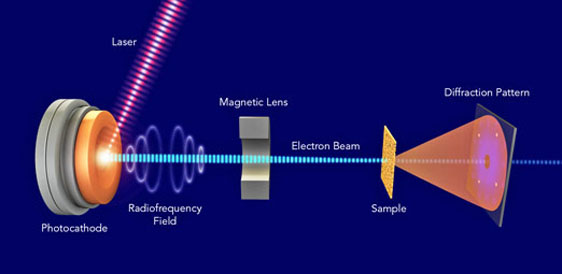Researchers at the SLAC National Accelerator Laboratory in Menlo Park, California have designed an advanced instrument for ultra-fast electron diffraction (UED) that can reveal motions of electrons and atomic nuclei within molecules that take place in less than a tenth of a trillionth of a second. SLAC’s Xijie Wang, who is in charge of developing the new instrument, described the device in a paper published in Review of Scientific Instruments .

The apparatus for ultrafast electron diffraction allows for study of motions in materials that take place in less than 100 quadrillionths of a second. Its beam gets accelerated by an RF field and focused by a magnetic lens. (SLAC National Accelerator Laboratory)
Similar to X-ray light, highly energetic electrons can take snapshots of the interior of materials as they pass through them. The performance of the new system is largely due to a very stable “electron gun” originally developed for SLAC’s X-ray laser. It produces extremely short bunches of highly energetic electrons and spits out 120 of these bunches every second. The method works because particles have a second nature: They also behave like waves.
When electron waves pass through a sample, they scatter off the sample’s nuclei and electrons. The scattered waves then combine to form a diffraction pattern picked up by a detector. Capturing differences in diffraction patterns over time lets scientists reconstruct the sample’s inner structure and how it changes. Renkai Li, the paper’s lead author said, “We were able to analyze samples such as very thin films whose X-ray signals would be very weak.”
Advertisement
Learn more about Electronic Products Magazine





